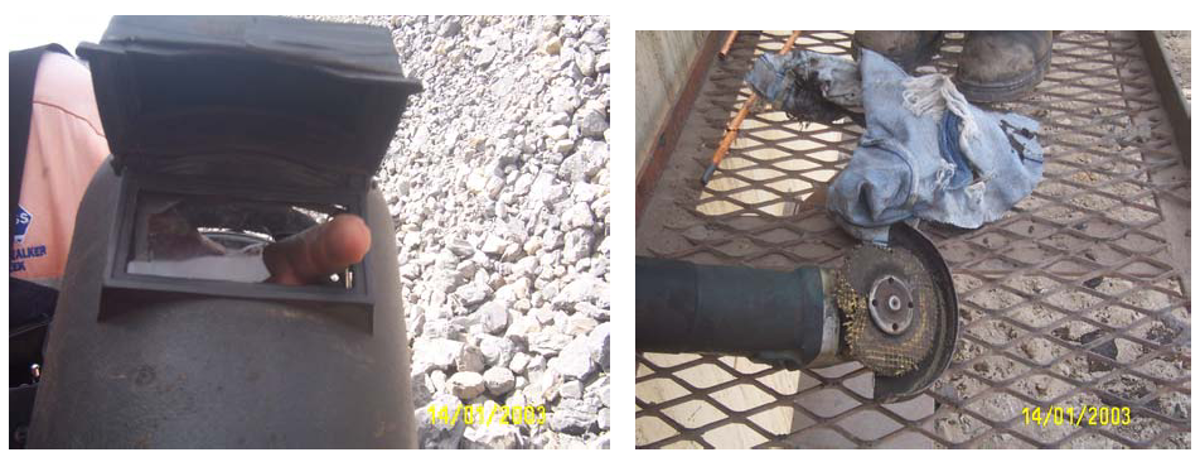Penetration injury to eye during blending repair weld
- Safety Flash
- Published on 1 February 2003
- Generated on 17 December 2025
- IMCA SF 02/03
- 2 minute read
Jump to:
A boilermaker suffered a serious eye injury from a fragment of shattered grinding disc penetrating the inner lens of his welding helmet and subsequently his eye.
What happened?
He was grinding a repair weld on the lower stabiliser link of the dragline with a 5″ electric grinder when it is believed that the tool jammed. It appears that when the grinder was released, the disc shattered and penetrated the eye protection.
The injured person was transported to an eye specialist for treatment, but has suffered a permanent loss of vision in his left eye.

Preliminary outcomes from the resulting investigation indicate that the following factors may have contributed to the injury:
- The work environment was restricted, necessitating the boilermaker being in close proximity to the area being ground.
- The jamming/stalling of the grinder and subsequent failure of the disc wheel.
- The inner lens of the welding helmet, which should be impact-resistant, may inadvertently been replaced with an ‘anti-splatter’ cover lens, which would have offered little impact resistance.
The following actions have been instigated by the company concerned:
- Discussion of the incident, possible causes and interim preventative measures with worksite personnel.
- An interim measure of mandating a face shield and safety glasses to be worn whilst performing grinding, as opposed to welding helmets.
- Checking of all welding helmets to ensure the correct lens plates are installed and that they are in the correct position.
IMCA Safety Flashes summarise key safety matters and incidents, allowing lessons to be more easily learnt for the benefit of the entire offshore industry.
The effectiveness of the IMCA Safety Flash system depends on the industry sharing information and so avoiding repeat incidents. Incidents are classified according to IOGP's Life Saving Rules.
All information is anonymised or sanitised, as appropriate, and warnings for graphic content included where possible.
IMCA makes every effort to ensure both the accuracy and reliability of the information shared, but is not be liable for any guidance and/or recommendation and/or statement herein contained.
The information contained in this document does not fulfil or replace any individual's or Member's legal, regulatory or other duties or obligations in respect of their operations. Individuals and Members remain solely responsible for the safe, lawful and proper conduct of their operations.
Share your safety incidents with IMCA online. Sign-up to receive Safety Flashes straight to your email.